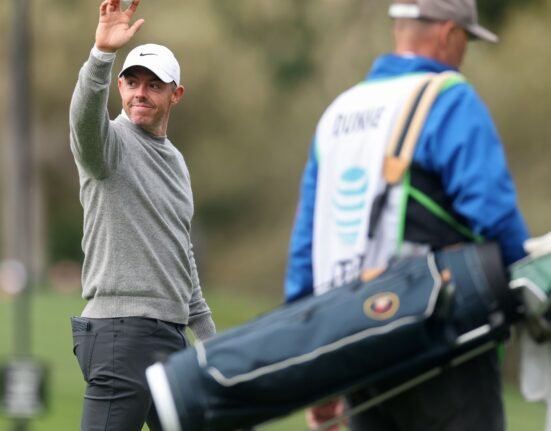(Bloomberg) — The UK’s borrowing costs are heading for their biggest three-day drop in more than a year, but traders see little relief ahead for the pound amid lingering concerns about the government’s finances.
Most Read from Bloomberg
The country’s 10-year yields have slid over 25 basis points since Wednesday, following a combination of weaker retail sales and slowing inflation figures that signal a faltering economy. That’s led traders to revive bets on the Bank of England slashing rates this year to bolster growth, boosting the bonds but hurting the pound — which a survey showed is the most vulnerable UK asset to further losses.
The drop in borrowing costs — from the highest levels seen since 2008 — is welcome news for Chancellor Rachel Reeves after a week that has seen calls for her resignation and accusations that her budget hurt Britain’s economy. But weakening growth forecasts suggest a hole in the finances remains, keeping the pressure on UK assets.
“For bonds, our view is that the bearish trend will prove to be persistent: the challenging fundamental backdrop has scarcely changed,” said Laurence Mutkin, director of EMEA rates strategy at BMO Capital Markets.
This month’s spike in UK borrowing costs to multi-decade highs fueled worries Reeves would need to hike taxes again or cut spending to meet her fiscal rules, which would damage her economic agenda. Investors are still worried that inflation will keep yields high.
“The rally in gilts certainly has given the fiscal hawks some breathing room,” said Pooja Kumra, senior UK and European rates strategist at Toronto-Dominion Bank. Demand at next week’s syndication of 2040 gilts will be scrutinized to see whether investors are willing to return to longer-dated bonds, she added.
Traders will also be watching the UK’s jobs and services industry data next week to gauge the outlook for policy. UK retail sales data Friday posted a surprise fall, the latest in a run of soft indicators that have triggered the recovery in gilts. The 10-year yield has fallen to 4.62%, after hitting 4.92% last week.
“The figures come after the downward surprises in CPI and activity data this week and should help to favor a more dovish BOE,” said Roberto Cobo Garcia, head of G-10 FX strategy at BBVA. “Sterling will continue trading on the back foot” ahead of the central bank’s next meeting on Feb. 6, he said.







